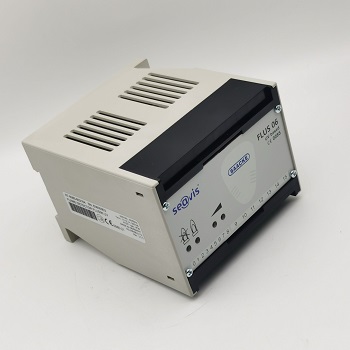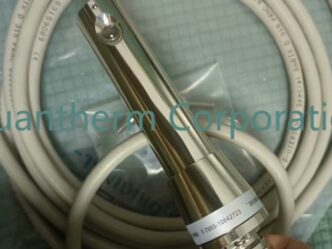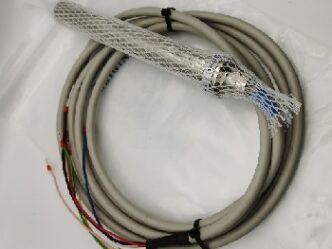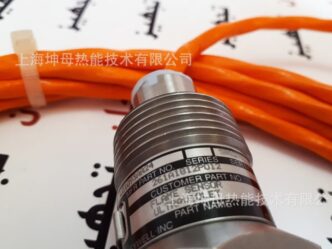Description
SAACKE flus06 UV flame detector is widely used for flame monitoring in industrial combustion systems. The detector is part of SAACKE’s combustion control product line, aimed at enhancing the reliability and safety of industrial heating processes.
Main Features
- Detection Principle: Relies on ultraviolet (UV) sensors to detect UV radiation emitted by flames, enabling rapid identification of flame presence or extinction.
- Application: Designed for gas or oil-fired burners in boilers, furnaces, and other industrial heating systems.
- Compact Design: Features a small, robust enclosure suitable for harsh industrial environments.
- Signal Processing: Provides electrical signals (e.g., relay outputs) to control systems for safe ignition and flame safeguard functions.
- Safety Compliance: Meets industry standards for flame monitoring in combustion systems, ensuring operational safety and compliance with regulations.
Functionality
- Continuously monitors flame status during operation.
- Triggers alarms or shuts down the fuel supply if a flame failure is detected, preventing unsafe conditions like gas accumulation.
- Works in conjunction with burner control units to ensure proper ignition sequence and flame supervision.
Typical Specifications
- Sensing Range: Specific to UV wavelengths (e.g., 185–260 nm).
- Response Time: Rapid detection (typically within milliseconds).
- Power Supply: Standard industrial voltage (e.g., 24 VDC or 110/230 VAC).
- Environmental Resistance: Dust-proof, vibration-resistant, and suitable for high-temperature environments (with proper installation).
FAQ
Q: How does the Saacke FLUS 06 UV Flame Sensing Detector work?
The detector contains a UV – sensitive photocelL, when the flame emits ultraviolet radiation, the UV sensitive photocell converts the UV radiation into an electric current.
The intensity of the output current indicates the strength of the UV, thereby signaling the presence of a flame.
It can distinguish flames from other light sources by ignoring visible and infrared light.
Q: Why does the FLUS 06 detector give false alarms?
There are several reasons:
- First, environmental factors may be involved. For example, strong ultraviolet light sources in the surrounding environment, such as sunlight or arc welding light, may be misjudged as flame signals by the detector. Electromagnetic interference from nearby large scale electrical equipment can also affect the detector’s electronic circuits. In addition, dust, dirt, or water vapor accumulated on the surface of the UV sensor can affect the normal detection of ultraviolet light, leading to false alarms.
- Second, problems with the device itself can also cause false alarms. For example, the UV sensor may age or be damaged after a long period of use, changing its sensitivity to ultraviolet light or generating incorrect electrical signals. Circuit failures, such as damage, short circuits, or open circuits of electronic components on the circuit board, can also lead to incorrect signal processing and false alarms.
Q: How should the Saacke FLUS 06 UV Flame Sensing Detector be installed?
The detector should be installed in an appropriate location to maximize its effectiveness. It should be placed in an area where flames are most likely to occur, and the installation angle should be such that the flame is within the effective viewing angle of the sensor. Avoid installing it in places prone to vibration or impact, as this can cause false alarms. Also, make sure there are no obstructions in the detection area to ensure unobstructed detection of the flame.
Q: How to maintain the Saacke FLUS 06 UV Flame Sensing Detector?
Regular maintenance is required to ensure the normal operation of the detector. The sensor surface should be cleaned regularly to remove dust, dirt, and other contaminants. Use a soft, lint free cloth and a mild cleaning solution to clean the optical components of the sensor. At the same time, check the installation position and connection of the equipment to ensure that it is firmly installed and the connection is good. In addition, the detector should be calibrated and tested regularly according to the manufacturer’s instructions to ensure its accuracy and reliability.
Q: How to judge whether the sensor of the detector fails?
If the detector shows a significant decrease in sensitivity during use, such as a longer detection time or a failure to detect a flame that should be detected, it may be that the sensor is aging or damaged. In addition, if the detector gives false alarms or malfunctions frequently, and other factors such as the environment and circuit have been excluded, then the sensor failure may be the cause. You can also visually check the appearance of the sensor to see if there is any damage, such as cracks or discoloration. If possible, professional testing equipment can be used to test the performance of the sensor.
 +8613906047998
+8613906047998


